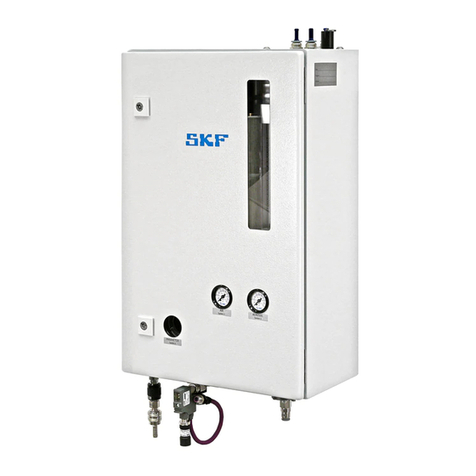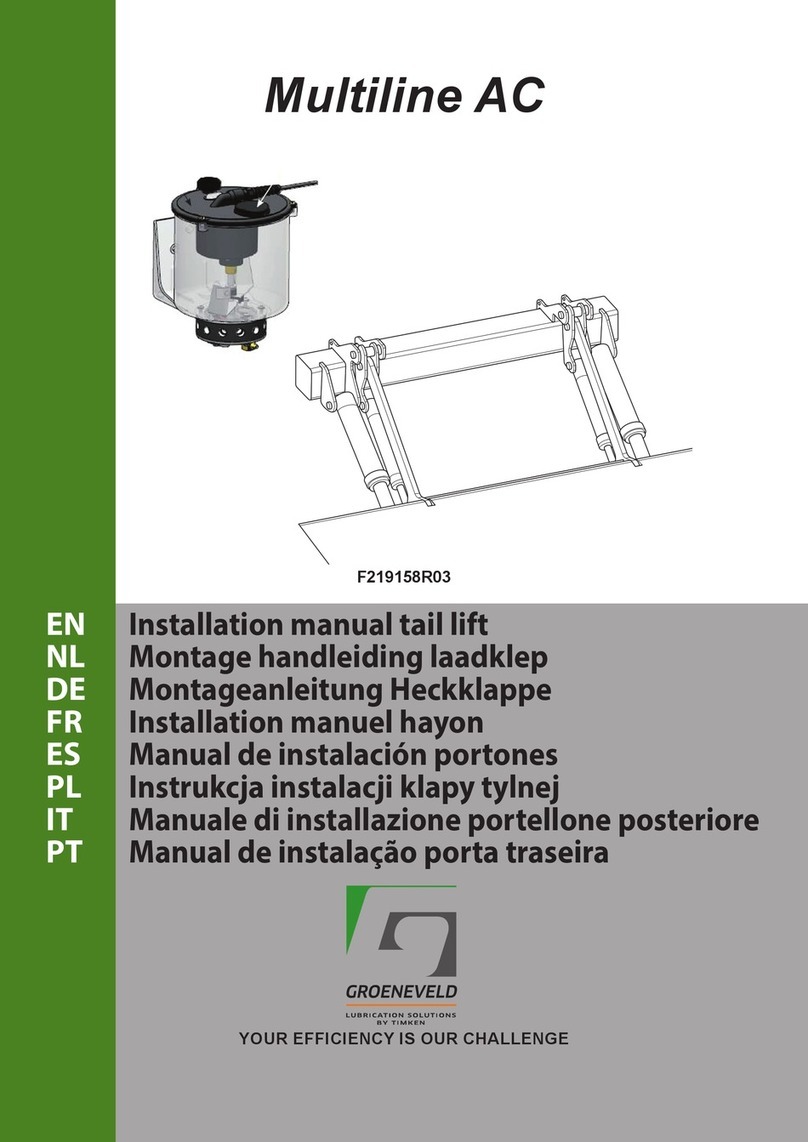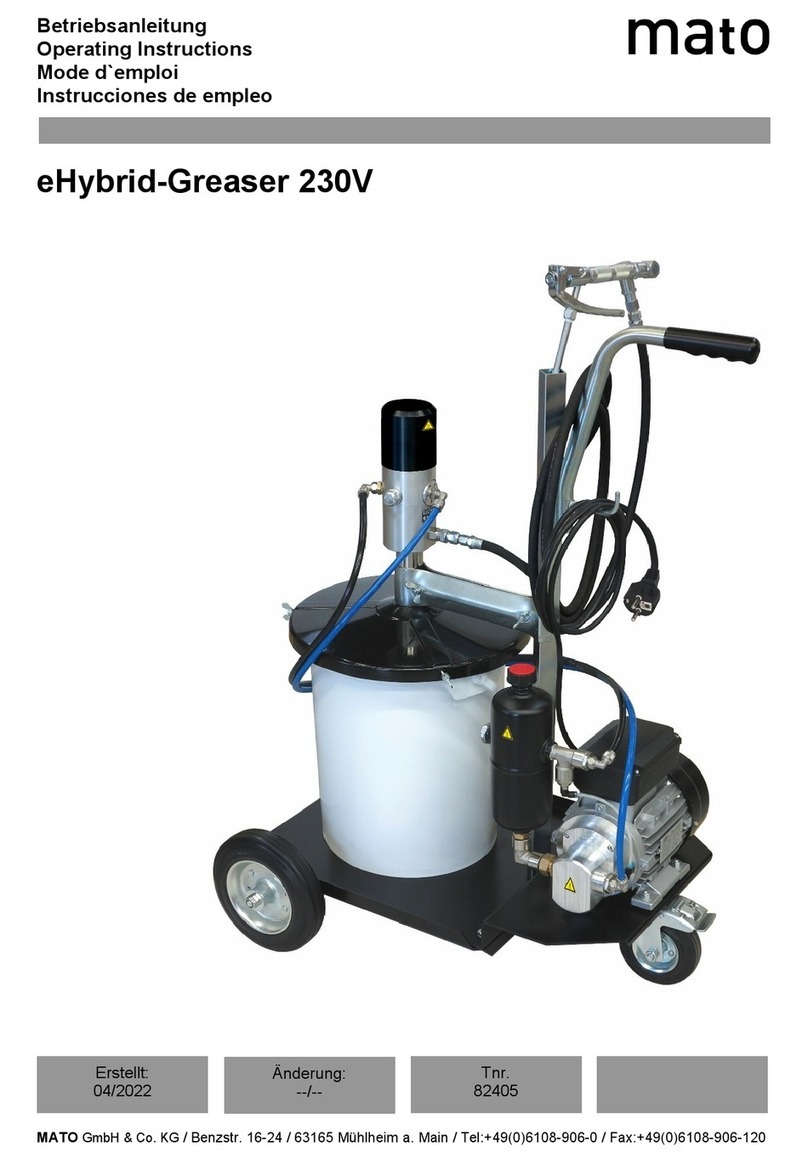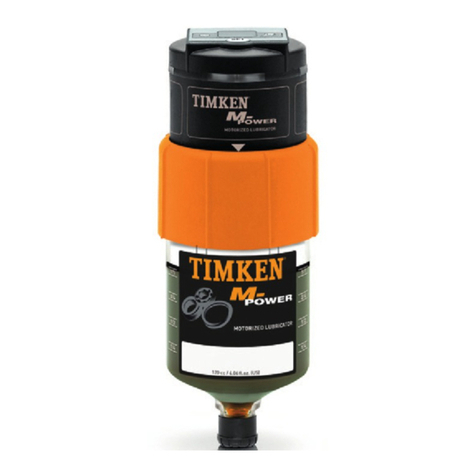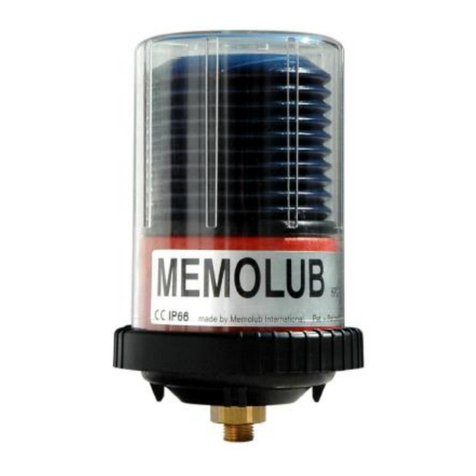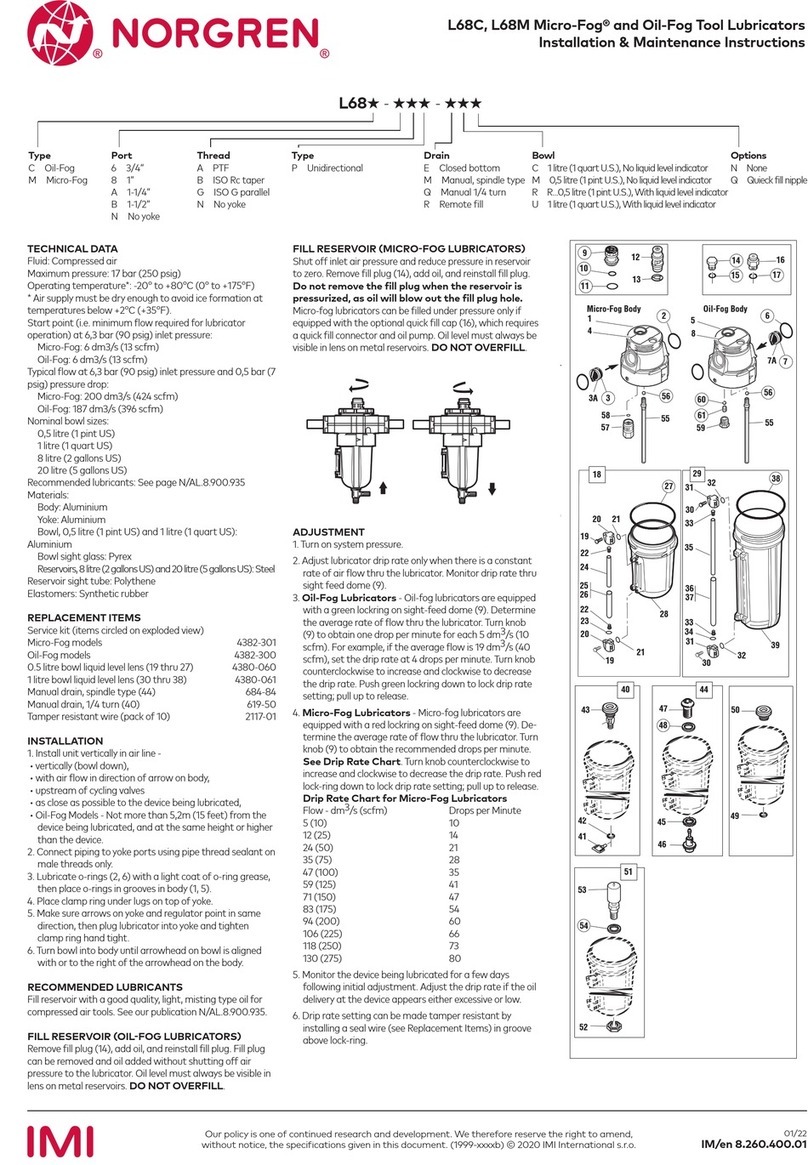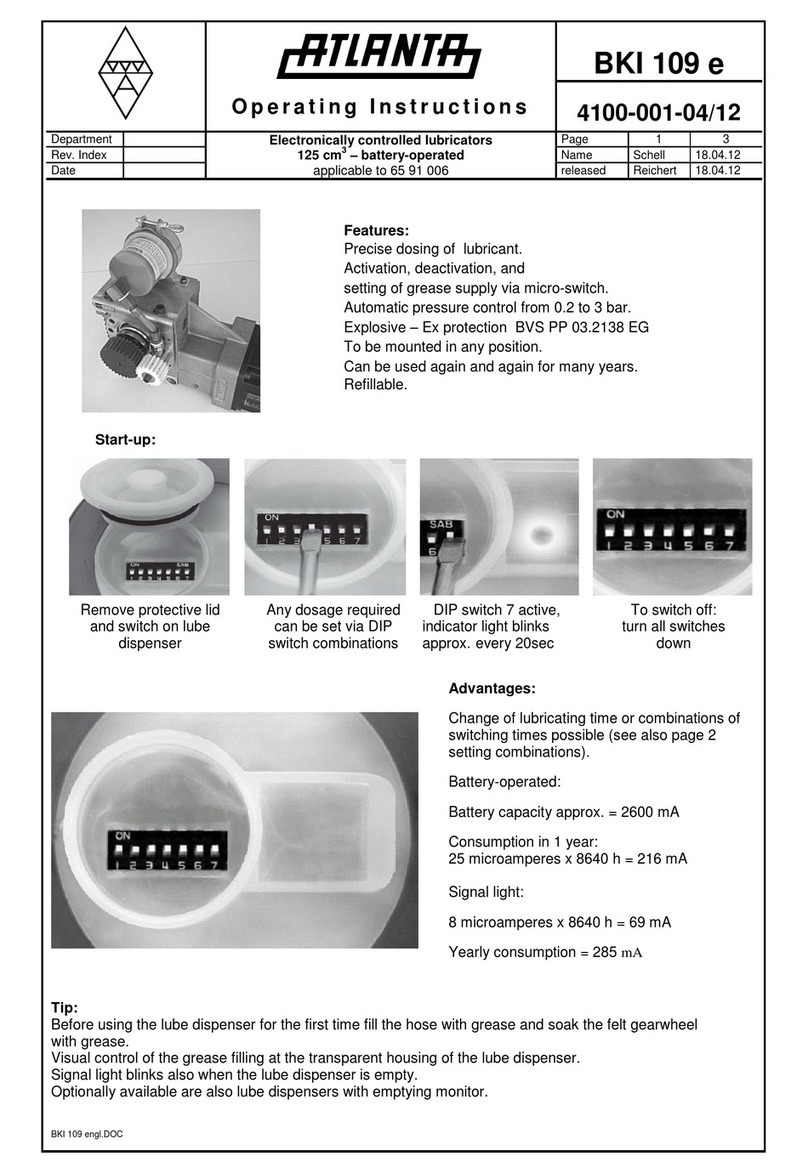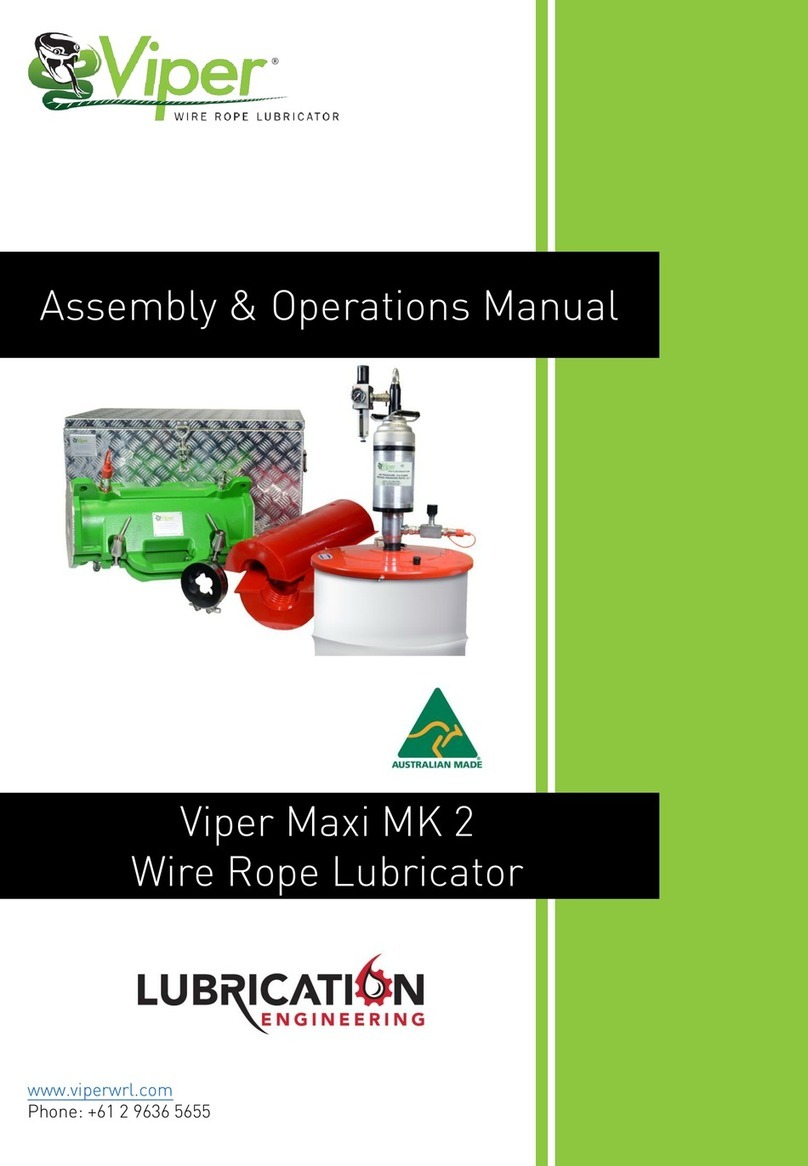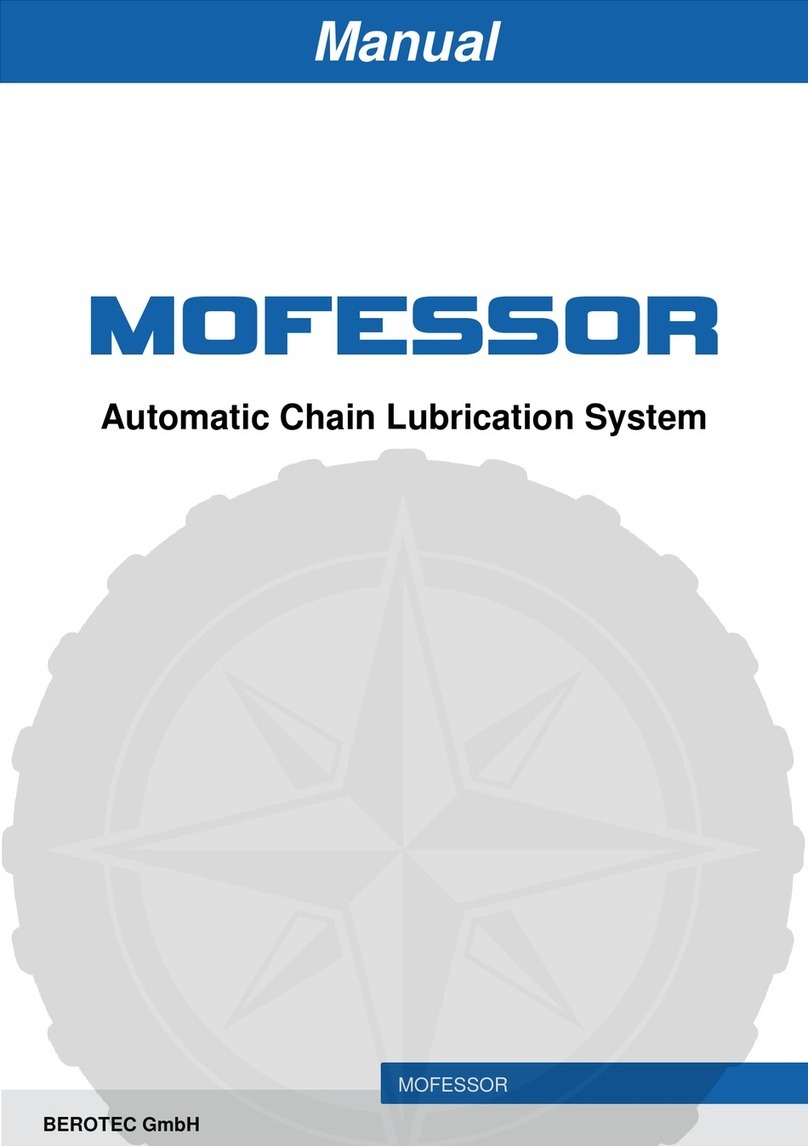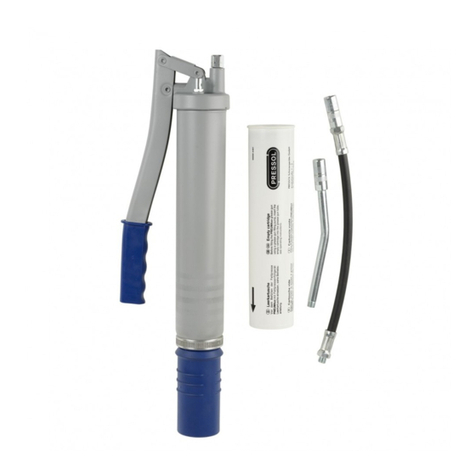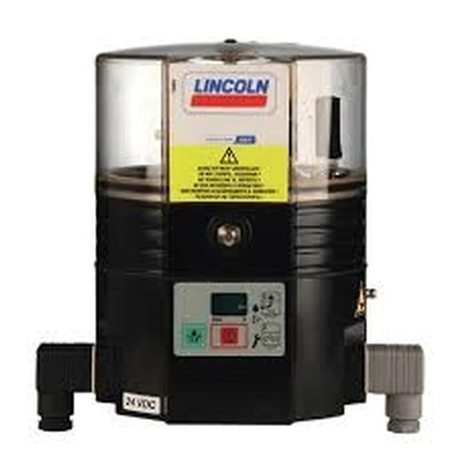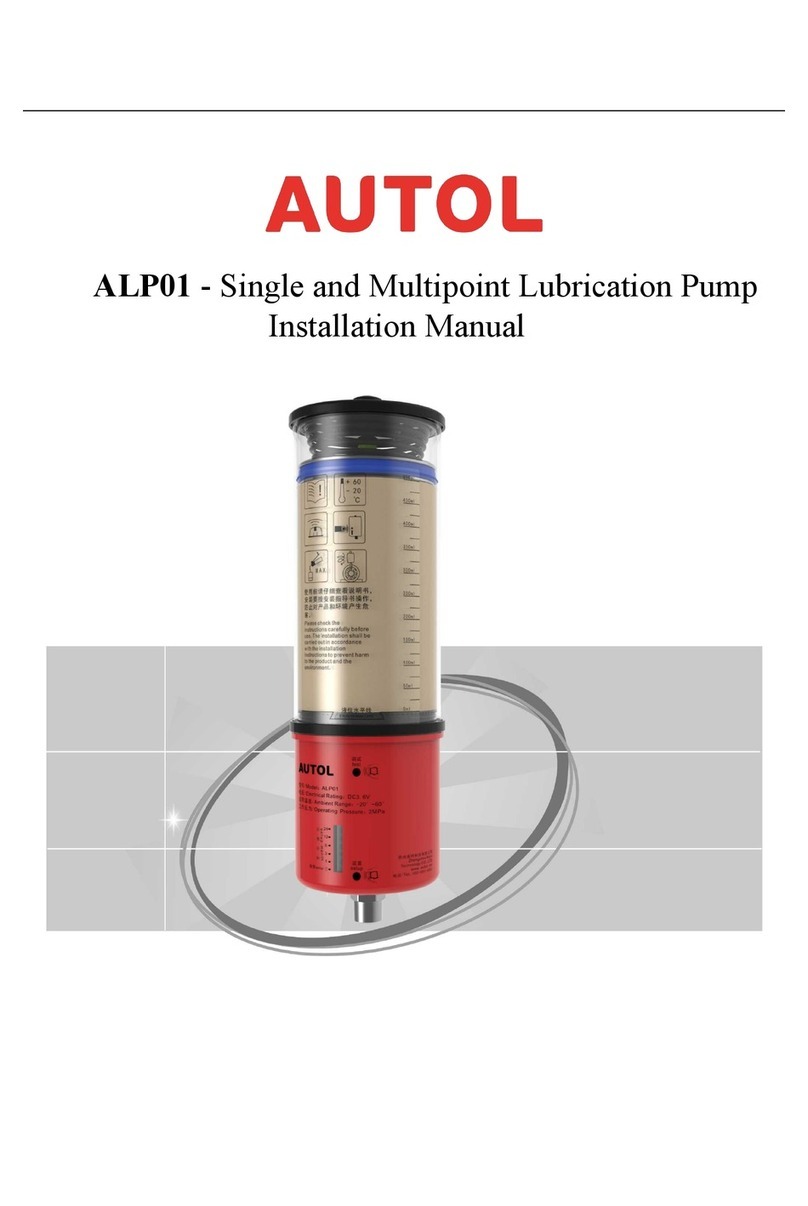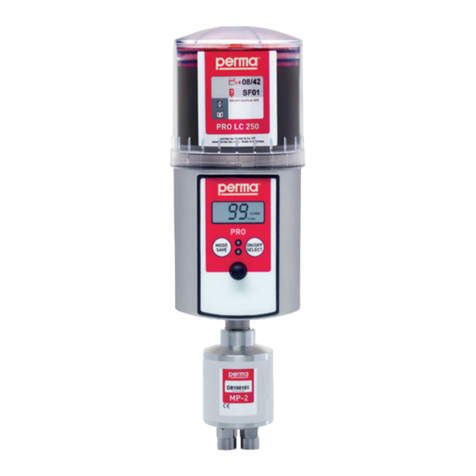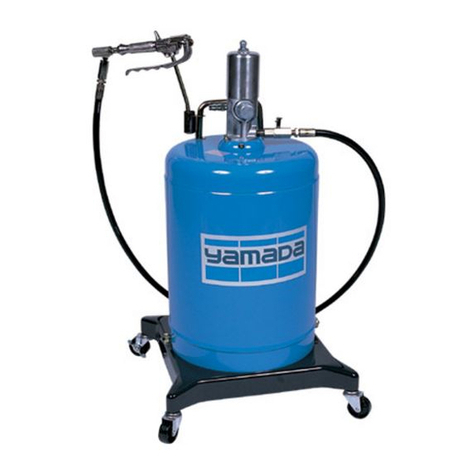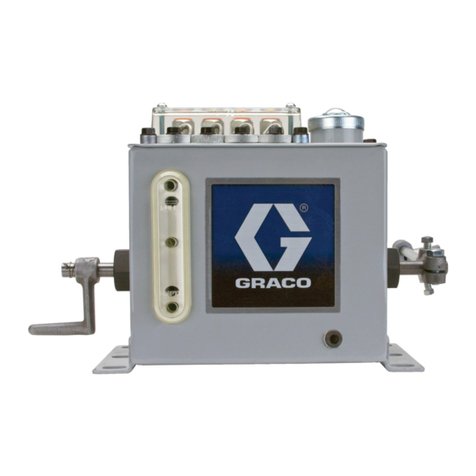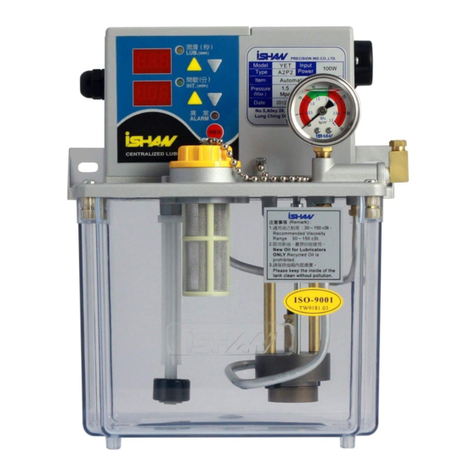
Operating manual Lubricator
Revision: 02
2022-D064493
en-1
Inhalt
1 About this manual 2
1.1 Signal words 2
1.2 Safety symbols 3
1.3 Layout of the safety instructions 3
1.4 Information symbols 3
2 Safety 4
2.1 EC/EU directive 4
2.2 Hazards 4
2.3 Personnel 4
2.4 Intended use 4
2.5 Reasonably foreseeable misuse 4
2.6 Warranty and liability 5
2.7 General safety instructions 5
3 Functional description 6
3.1 Type plate 7
3.2 Marking 7
3.3 Ordering code 7
3.4 Technical data 8
4 Transport and storage 9
4.1 Scope of delivery 9
4.2 Packaging 9
4.3 Transport 9
4.4 Storage 9
5 Installation 10
5.1 Preparations 10
5.2 Installation and initial operation 10
5.3 Installing the electrical connections 11
6 Operation 12
6.1 Adjustable parameters 12
6.1.1 P (Pressure) 12
6.1.2 t (time / running time, cartridge
emptying times) 12
6.1.3 C (cycle / number of cycles,
strokes per lubrication cycle) 12
6.1.4 Pu (pulse mode) 13
6.1.5 U (cartridge size) 13
6.1.6 E (Error / inversion of
output signals) 13
6.1.7 L (empty signal) 13
6.1.8 F (feedback signal /
motor running check) 13
6.2 Selection of the parameters t and C. 14
6.3 Menu structure 15
6.4 Switching the lubricator on/off 16
6.5 Changing parameters in the
standard menu (Pro) 17
6.6 Triggering a single lubrication sequence 18
6.7 Triggering the filling function
(venting/filling)
19
6.8 Changing parameters in the
Expert menu 20
6.9 Replace the cartridge 22
6.10 Replacing the battery 22
7 Messages and Errors 23
7.1 Pin assignment – time control 23
7.1.1 Overview of ouput signals
(PIN4) – Time control 23
7.1.2 Standby – Time control 24
8 Pulse control 24
8.1 Control signals (PIN 2) 24
8.1.1 Overview of control signals 24
8.1.2 2sec signal (single pump stroke) 25
8.1.3 3sec signal (two pump strokes) 26
8.1.4 4sec signal (C pump strokes) 27
8.1.5 6sec / 12 sec signal
(filling/venting procedure) 28
8.1.6 10sec signal (acknowledge error
message) 29
8.2 Output signals (PIN 4) - Pulse control 30
8.2.1 Overview of output signals 30
8.2.2 Error E1 (empty) 30
8.2.3 Error E2 (no cartridge) 31
8.2.4 Transition of error E1 to E2 31
8.2.5 Error E3 (Low voltage) 32
8.2.6 Error E7 (Excess pressure) 32
9 Maintenance 33
9.1 Maintenance tasks 33
9.1.1 Visual inspection 33
9.1.2 Cleaning 33
9.2 Start up after maintenance 33
9.3 Maintenance schedule 34
9.4 Notes on the lubricant used 34
9.5 Disposal 34
10 Appendix 35
10.1 Tightening torques for common
thread sizes in general
mechanical engineering 35
10.2 Declaration of conformity 36
